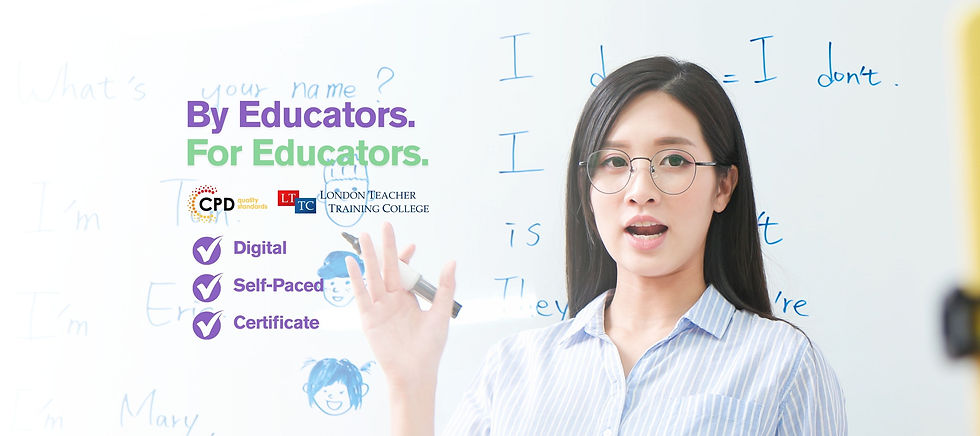How to Implement Project-Based Learning in Your Classroom: A Beginner’s Guide
- Henry Maximus C

- May 20
- 3 min read
Are you looking for a teaching method that sparks curiosity, fosters collaboration, and prepares students for the real world? Project-Based Learning (PBL) might just be the answer you’ve been searching for. But if you’re new to PBL, you might be wondering: Where do I even start?
Don’t worry—you’re not alone. Many educators feel the same way, which is why we’ve created this beginner’s guide to help you confidently implement PBL in your classroom. And if you’re ready to dive deeper, our Certificate in Project-Based Learning Implementation course is here to guide you every step of the way.
Let’s get started!

What is Project-Based Learning?
Project-Based Learning is a teaching method where students learn by actively engaging in real-world projects. Instead of passively absorbing information, they tackle meaningful problems, collaborate with peers, and create solutions that matter.
Think of it as learning by doing. For example, instead of just reading about environmental issues, students might design a community recycling program or create a campaign to reduce plastic waste.
PBL isn’t just about the end product—it’s about the journey. Students develop critical thinking, problem-solving, and teamwork skills that will serve them well beyond the classroom.
Why Should You Try PBL?
Project-Based Learning isn’t just a trend—it’s a powerful way to transform your teaching and your students’ learning experience. Here’s why:
Engages Students: PBL makes learning relevant and exciting. Students are more motivated when they see the real-world impact of their work.
Builds Critical Skills: From collaboration to creativity, PBL helps students develop skills they’ll need in the 21st century.
Encourages Ownership: Students take charge of their learning, which boosts confidence and independence.
Makes Teaching Fun: Watching your students tackle challenges and create amazing projects is incredibly rewarding.
Step-by-Step Guide to Implementing PBL
Ready to bring PBL into your classroom? Here’s a simple, actionable guide to get you started:
1. Choose a Real-World Problem or Topic
Start with a question or challenge that matters to your students. For example:
How can we reduce waste in our school?
What can we do to promote kindness in our community?
How can we design a better playground for younger students?
The key is to pick something that’s meaningful, relevant, and open-ended.
2. Plan the Project
Break the project into manageable steps:
Define clear objectives and learning outcomes.
Create a timeline with milestones.
Gather the resources your students will need (e.g., materials, tools, or access to experts).
3. Guide Students Through the Process
Your role is to facilitate, not dictate. Encourage students to:
Research and gather information.
Collaborate and share ideas.
Experiment, iterate, and refine their solutions.
4. Assess and Reflect
Assessment in PBL isn’t just about the final product—it’s about the process. Use rubrics to evaluate:
Critical thinking and problem-solving.
Collaboration and communication.
Creativity and innovation.
Don’t forget to reflect as a class. What worked well? What could be improved? Reflection is where the real learning happens.
Common Challenges (and How to Overcome Them)
Implementing PBL can feel overwhelming at first, but here are some common challenges and how to tackle them:
Time Management: PBL takes time, but careful planning can help. Break the project into smaller tasks and set clear deadlines.
Student Engagement: Not all students will be excited at first. Start with a topic they care about, and celebrate small wins along the way.
Assessment: Traditional tests don’t work for PBL. Use rubrics to assess both the process and the final product.
How Our Certificate Course Can Help
If you’re ready to take your PBL skills to the next level, our Certificate in Project-Based Learning Implementation is here to help. This self-paced course is designed specifically for educators like you who want to:
Master the step-by-step process of implementing PBL.
Access tools, templates, and resources to make PBL easier.
Gain confidence through hands-on assignments and practical strategies.
And the best part? It’s affordable, flexible, and designed to fit into your busy schedule.
Ready to get started? Enroll in our Certificate in Project-Based Learning Implementation course today and transform your classroom into a hub of creativity and innovation!



Comments